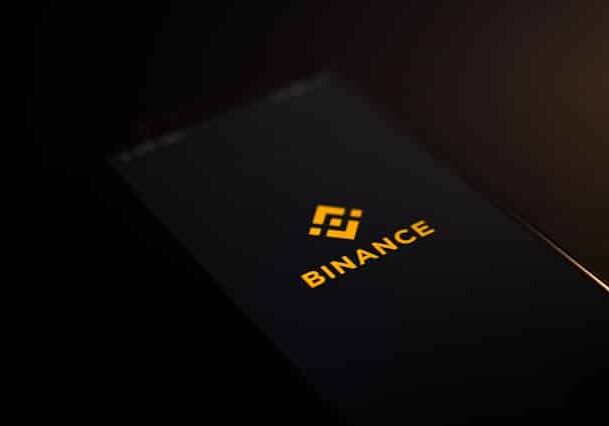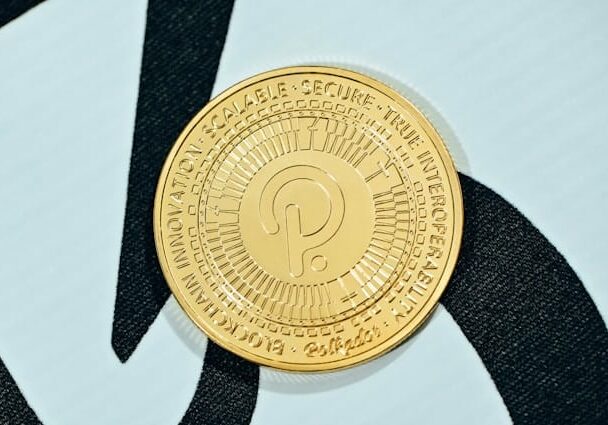Cryptocurrency is a digital currency that works without needing banks or middlemen like, for example, MasterCard. This allows secure transactions to occur directly between people. With over 10,000 cryptocurrencies currently on the market, it can be hard to know which ones are worth investing in.
This guide focuses on the definition of cryptocurrency (along with a list of terms), the top 10 cryptocurrency types with the most growth potential and the benefits of investing in cryptocurrency.
What Is a Cryptocurrency?
Cryptocurrencies are digital money and are considered digital assets that use special coding (cryptography) to keep them secure and hard to copy or fake. They work without a central authority, like a government or bank, which makes them transparent and secure. Instead, they run on a shared system called blockchain, managed by a network of computers.
The first cryptocurrency, Bitcoin, was created in 2009 by an unknown person or group using the name Satoshi Nakamoto. Bitcoin opened the door for many other cryptocurrencies, each with its own unique uses. For example, Ethereum introduced “smart contracts,” which are automatic agreements that follow rules written into computer code. Other cryptocurrencies focus on faster payments, more privacy, and better security.
People use cryptocurrencies for things like online shopping, investing, and raising money for projects. Even though their prices can change a lot due to many factors, cryptocurrencies have become a serious financial option, with many large companies interested in how they might change the world of finance, especially as market caps continue to grow.
Some tax-haven countries have also been more accepting of crypto and have introduced tax incentives that benefit investors in many ways, not to mention that in some nations, it is even possible to get crypto citizenship.
Top 10 Most Popular Cryptocurrencies
1. Bitcoin (BTC)
- Market Cap: 1.67T USD
- YoY Return: Around 130%
Bitcoin is the first and most well-known cryptocurrency, created in 2009 by an anonymous person or group named Satoshi Nakamoto. It’s considered the number one choice for cryptocurrency investments.
During one of our live streams about cryptocurrency, Pedro Solimano, a political scientist and crypto space specialist, mentioned that the popularity of Bitcoin has been used as a blanket term for cryptocurrency.
“Bitcoin is in a category of its own when it comes to cryptocurrency… they have different technological goals, companies, tokenomics, and investment strategies,” added Solimano.
Bitcoin introduced a digital currency that doesn’t need banks or governments. Transactions are verified by network computers and recorded on a public blockchain, making it secure and transparent.
Bitcoin’s big innovation is blockchain, where records can’t be changed. Transactions are grouped in blocks and added to the blockchain. Miners use computers to solve complex problems, validate transactions, and protect the network.
With a supply limit of 21 million coins, Bitcoin is scarce, giving it “digital gold” status. It is available on the largest crypto exchanges and brokerage services and remains the most valuable cryptocurrency. It is a popular choice for both new and experienced investors.
2. Ethereum (ETH)
- Market Cap: 219.61B USD
- YoY Return: Around 60%,
Ethereum is an open-source blockchain that changed the world of cryptocurrency by introducing smart contracts and decentralized apps (dApps).
Proposed by Vitalik Buterin in 2013 and launched in 2015, Ethereum allows self-executing contracts that run automatically without downtime, fraud, or third-party interference.
Developers use Ethereum’s blockchain to create and run apps in various fields like finance (DeFi), gaming, and supply chain, and they use the Ethereum Virtual Machine (EVM) for security and isolated execution.
The native cryptocurrency, Ether (ETH), is used to pay transaction fees and computational services on the network. It also powers dApps, incentivizing miners and validators to maintain the system.
Ethereum is transitioning from proof-of-work (PoW) to proof-of-stake (PoS) with its Ethereum 2.0 upgrade. This change aims to improve scalability, security, and energy efficiency by allowing users to validate transactions and earn rewards by staking their ETH.
With a strong developer community and a wide range of applications, Ethereum remains a key player in the decentralized internet (Web3), making it a popular choice for developers, investors, and businesses.
3. Binance Coin (BNB)
- Market Cap: 85.32B USD
- YoY Return: About 25%
Binance Coin (BNB) is the cryptocurrency of Binance, one of the biggest cryptocurrency exchanges in the world. It was launched in 2017 and started as a token on the Ethereum blockchain before moving to its own blockchain, Binance Chain.
BNB is mainly used for discounts on trading fees on the Binance platform, making it popular with frequent traders.
It also has other uses, like paying transaction fees on Binance Chain, participating in token sales on Binance Launchpad, and staking on Binance Smart Chain (BSC).
Launched in 2020, Binance Smart Chain expanded BNB’s use by allowing the creation of decentralized apps (dApps) and DeFi projects. BNB is also deflationary, meaning Binance reduces its total supply by burning coins, potentially increasing its value over time. With many uses and a strong ecosystem, BNB is a key player in the crypto market.
4. Cardano (ADA)
- Market Cap: 23.4B USD
- YoY Return: Nearly 28%
Cardano is a third-generation blockchain created in 2017 by Charles Hoskinson, who also helped start Ethereum.
The goal was to build a more balanced and sustainable system for cryptocurrencies, solving common issues like scalability (handling more users), interoperability (working with other blockchains), and sustainability (using less energy).
Cardano has been developed through a careful, peer-reviewed process, meaning its technology is reviewed by experts to ensure it’s secure and reliable. It runs on a proof-of-stake (PoS) system called Ouroboros. It uses less energy than older systems and allows ADA (Cardano’s cryptocurrency) holders to help secure the network and earn rewards.
Cardano has two parts:
- Cardano Settlement Layer (CSL) – Handles transactions.
- Cardano Computation Layer (CCL) – Runs smart contracts and decentralized apps (dApps).
This setup makes Cardano faster and more flexible for complex applications. ADA’s cryptocurrency is used for staking, transaction fees, and voting on network decisions. With its focus on energy efficiency, security, and practical uses, Cardano is seen as a strong option for the future of blockchain, especially in areas like decentralized finance (DeFi) and identity management.
5. Solana (SOL)
- Market Cap: 61.04B USD
- YoY Return: About 65%,
Solana is a blockchain platform created in 2020 by Anatoly Yakovenko. It’s designed to support decentralized apps (dApps) and cryptocurrencies with fast, secure, and scalable transactions. Unlike older blockchains, Solana can handle thousands of transactions per second with very low fees.
Solana uses a special system called Proof of History (PoH) to create a timeline of events. This works together with Proof of Stake (PoS), allowing it to process transactions quickly and efficiently. The platform’s cryptocurrency, SOL, is used for transactions and staking, helping to secure the network and reward participants.
Solana supports many types of decentralized apps, including finance projects (DeFi), NFT marketplaces, gaming, and Web3 apps. Its speed and low costs have made it a popular choice for developers, establishing Solana as a strong competitor in the blockchain world.
6. Polkadot (DOT)
- Market Cap: 6.41B USD
- YoY Return: Approximately 5%
Polkadot is a blockchain system created to let different blockchains work together and share information securely and efficiently.
Founded by Dr. Gavin Wood, who also co-founded Ethereum, Polkadot was built to solve the limitation brought on by older blockchains, such as scalability (handling lots of activity), interoperability (working together), and governance (decision-making).
Polkadot has a central relay chain that provides security and control. Connected to this are para—individual blockchains that can perform their own tasks but are still connected to the relay chain.
This setup lets Polkadot handle many transactions at once, making it fast and scalable. It also allows blockchains to transfer data and assets between each other.
Polkadot’s main token, DOT, is used for:
- Voting – DOT holders can vote on network changes.
- Staking – DOT is used to secure the network and reward honest participants.
- Bonding – DOT can be locked up to support new parachains.
Polkadot’s unique design for linking and scaling blockchains has made it popular with developers and investors, who see it as a key part of blockchain’s future.
7. Ripple (XRP)
- Market Cap: 121.96B USD
- YoY Return: Approximately 90%
Ripple is a digital payment system and cryptocurrency made for quick and low-cost international payments. Its currency, XRP, helps connect different currencies for global transactions.
Unlike many other cryptocurrencies, Ripple doesn’t rely on traditional mining. Instead, it uses a special system with independent validators to confirm transactions, which only takes 3-5 seconds. This speed and efficiency make Ripple popular with banks and financial companies that want to improve their international payment processes. Despite dealing with some legal issues, Ripple’s network is continually growing and plays a big role in digital finance.
8. Litecoin (LTC)
- Market Cap: 6.4B USD
- YoY Return: Close to 40%
Litecoin is a digital currency created by Charlie Lee in October 2011. It was made to work alongside Bitcoin but with faster transaction times. It uses a special algorithm called Scrypt to make crypto mining more decentralized, meaning more people can participate.
Litecoin has a maximum supply of 84 million coins. It’s popular because it’s fast, easy to access, and widely available on cryptocurrency exchanges and for payments. Many investors like Litecoin because it’s stable and has real-world uses.
9. Chainlink (LINK)
- Market Cap: 8.63B USD
- YoY Return: Around 18%
Chainlink is a decentralized network created in 2017 by Sergey Nazarov and Steve Ellis. It solves a fundamental problem with smart contracts: they can’t access data outside their own blockchain. Chainlink uses “oracles,” which are like messengers, to bring in and check outside data for smart contracts.
By using multiple sources, Chainlink makes sure the data is accurate and secure. Its native cryptocurrency, LINK, is used to pay those who operate the nodes (computers) that gather and deliver this data. As more people use blockchain, the need for secure data providers like Chainlink is likely to grow.
10. Avalanche (AVAX)
- Market Cap: 7.76B USD
- YoY Return: Roughly 16%
Avalanche is a blockchain platform created by Ava Labs in 2020 to make blockchain faster and handle more transactions than older networks like Ethereum.
Avalanche uses a special system called the Avalanche Consensus to process transactions quickly and with low delays without sacrificing decentralization. It has three main blockchains with different functions:
- X-Chain – for creating and trading assets.
- C-Chain – for running smart contracts (like Ethereum).
- P-Chain – for organizing the network and managing custom groups (subnets) of users.
Avalanche’s primary token, AVAX, is used to secure the network, pay transaction fees, and track value across different parts of the network. It can handle up to 4,500 transactions per second and works well with Ethereum, making it a popular choice for developers and investors.
9 Benefits of Investing in Cryptocurrency
Cryptocurrency makes it easy to transfer money without any involvement of banks and other financial institutions.
1. Protection Against Inflation
Inflation decreases physical currency value, leading many to view Bitcoin and other cryptocurrencies as inflation safeguards due to the capped supply.
2. Speediness
Traditional methods of transferring money from one account to another can take several days, especially in the United States. Cryptocurrency transactions, on the other hand, can take mere minutes to complete.
3. Cost-Effective Transference
Transactional cost when it comes to cryptocurrency can be minimal or zero since the need for third-party services like Visa are eliminated.
4. Decentralization
Decentralization in crypto represents a reduced censorship risk, and greater control for users, as it eliminates reliance on a single entity for validation and operation. No governmental body can set the coin’s worth or flow.
5. Diversity
Cryptocurrency investments can yield profits and offer portfolio diversification due to their limited correlation with stocks.
6. Accessibility
Investors only need a computer or a smartphone with an internet connection to use cryptocurrency. There’s no identification verification or background and credit checks needed to open a cryptocurrency wallet.
7. Security
Your funds are safe only if your crypto wallet’s private key is secure. Losing the key means losing access to your funds. Blockchain technology, along with public and/or private keys and verification systems, further enhances transaction security.
8. Transparency
The decentralized nature of blockchain technology allows users to track real-time transfers and view money transfer transactions.
9. Privacy
The transactions on the blockchain are pseudonymous and don’t reveal any personal information about you. Investors only have an identification number and your wallet address. The lack of third-parties also enhance privacy.
Key Terms to Understand Cryptocurrency
The Global Intelligence Unit at Global Citizen Solutions released a report on the best crypto-friendly countries. It looks at 75 nations based on factors like regulatory landscape, crypto mining costs, cyber security, usage of renewable energy, crypto adoption rates and more to find countries that best support cryptocurrency transactions.
Part of this Global Crypto-Friendly Nations Report is not only about highlighting the different legalities that help facilitate secure crypto investments but also to inform. The crypto world can be complicated, with many terms used interchangeably or incorrectly, but the following terms will help provide better context for understanding cryptocurrency:
Term | Definition |
Blockchain | A type of technology that records online transactions in a shared, secure database. It doesn’t rely on a central authority and is managed by multiple users. |
Crypto Asset | A digital asset that holds value and works with secure technologies like blockchain. It usually operates without any central control, using a shared system. |
Cryptocurrency | A digital currency used for transactions or storing value. It relies on secure technology (cryptography) rather than trust in people or institutions. |
Decentralization | A system without a central authority, so no single person or group controls it. Instead, control is shared across a network of users. |
Fiat | Types of physical money within the traditional financial ecosystem. Examples of fiat currencies are the US dollar and the euro. |
Mining | The process of creating new coins and verifying transactions on a blockchain. Miners use computer power and earn new coins as rewards. |
Private Key | This is used to identify the owner of a given cryptocurrency wallet. It acts much like a password, and the person with the private key can access the funds from the associated wallet address. |
Stablecoin | A type of cryptocurrency whose value is linked to something stable, like a regular currency or commodity, to reduce big price changes. |
Token | A digital asset created on an existing blockchain, unlike coins, which are directly tied to their own blockchain. |
Wallet | Wallets are tools used by crypto holders to control their private keys and provide an interface to make transactions. |
How Can Global Citizen Solutions Help You?
Global Citizen Solutions is a boutique migration consultancy firm with years of experience delivering bespoke residence and citizenship by investment solutions for international families. With offices worldwide and an experienced, hands-on team, we have helped hundreds of clients worldwide acquire citizenship, residence visas, or homes while diversifying their portfolios with robust investments.
We guide you from start to finish, taking you beyond your citizenship or residency by investment application.
Frequently Asked Questions About Top Cryptocurrency Types
What are cryptocurrencies?
A cryptocurrency is a digital currency that isn’t physical like bank notes and coins. All transactions are verified and its records maintained by a decentralized system using blockchain technology rather than by a centralized authority.
How do you buy cryptocurrency?
If you are a new investor and looking for the best way to buy cryptocurrency, you either choose a broker or a Crypto Exchange platform.
After choosing the medium, create an account and get it verified. Once your account is verified, you can deposit funds in your account, buy your cryptocurrency of choice, and select your storage method for your funds.
What are the potential risks of investing in cryptocurrency?
Some of the significant risks that come with cryptocurrency investment includes:
- extreme market volatility
- regulatory uncertainty
- security vulnerabilities
- potential for scams and fraud
What are decentralized exchanges (DEXs)?
A decentralized exchange (DEXs) is a peer-to-peer marketplace where cryptocurrency traders can directly buy, sell, and trade digital assets without relying on a centralized intermediary like a bank.
Is cryptocurrency real money?
Even though cryptocurrency is purchased with so-called “real” money, it does not have all the values of fiat currencies like the dollar or pound. It only exists as digital entries.

 Gizane Campos
Gizane Campos







